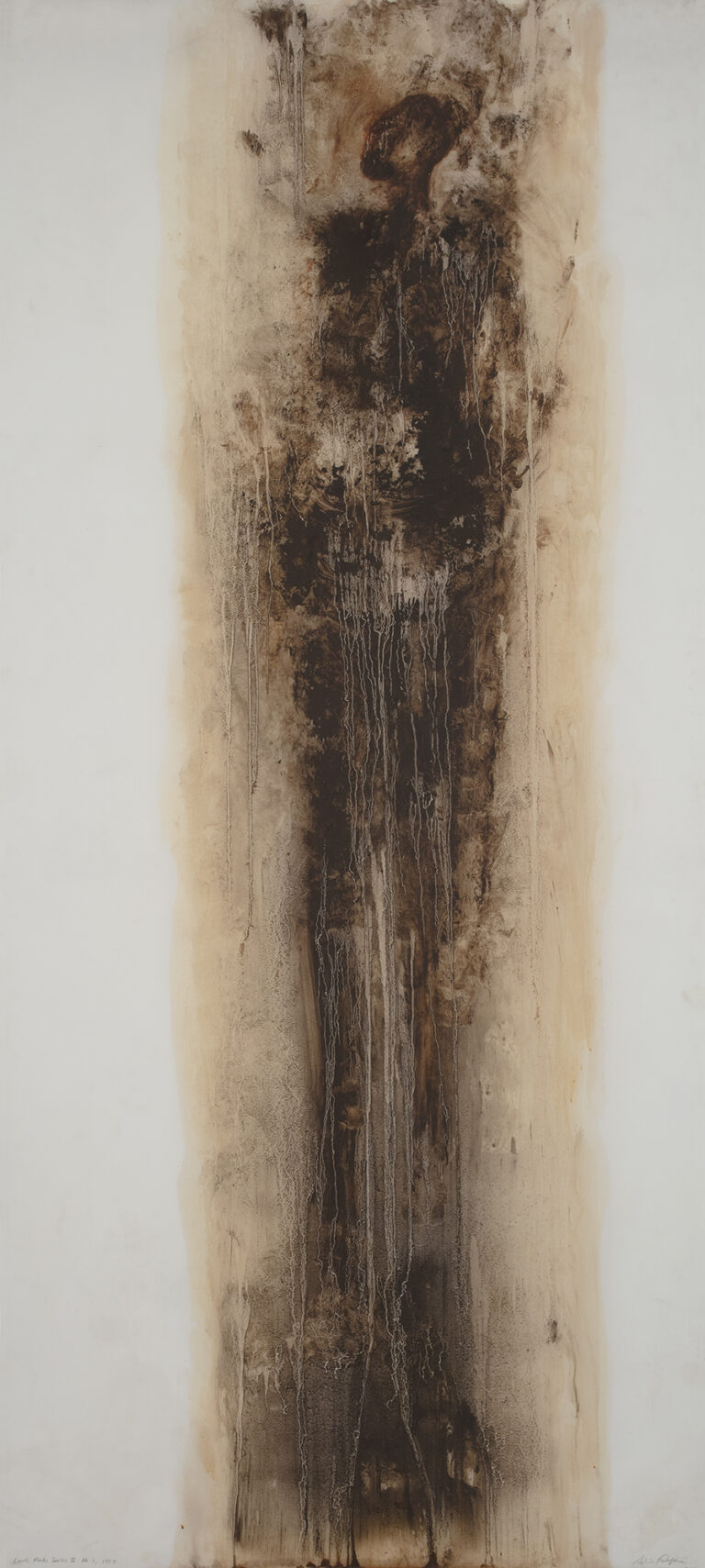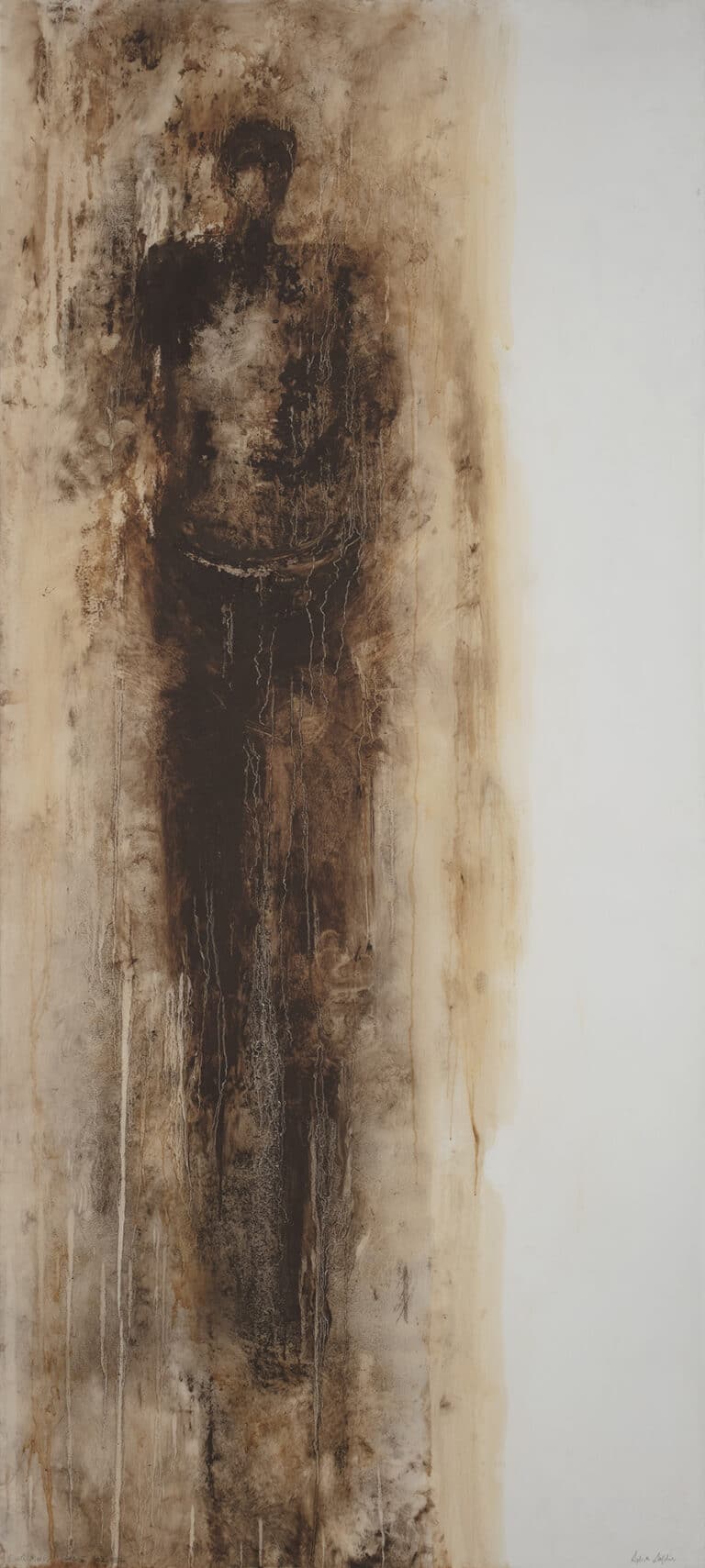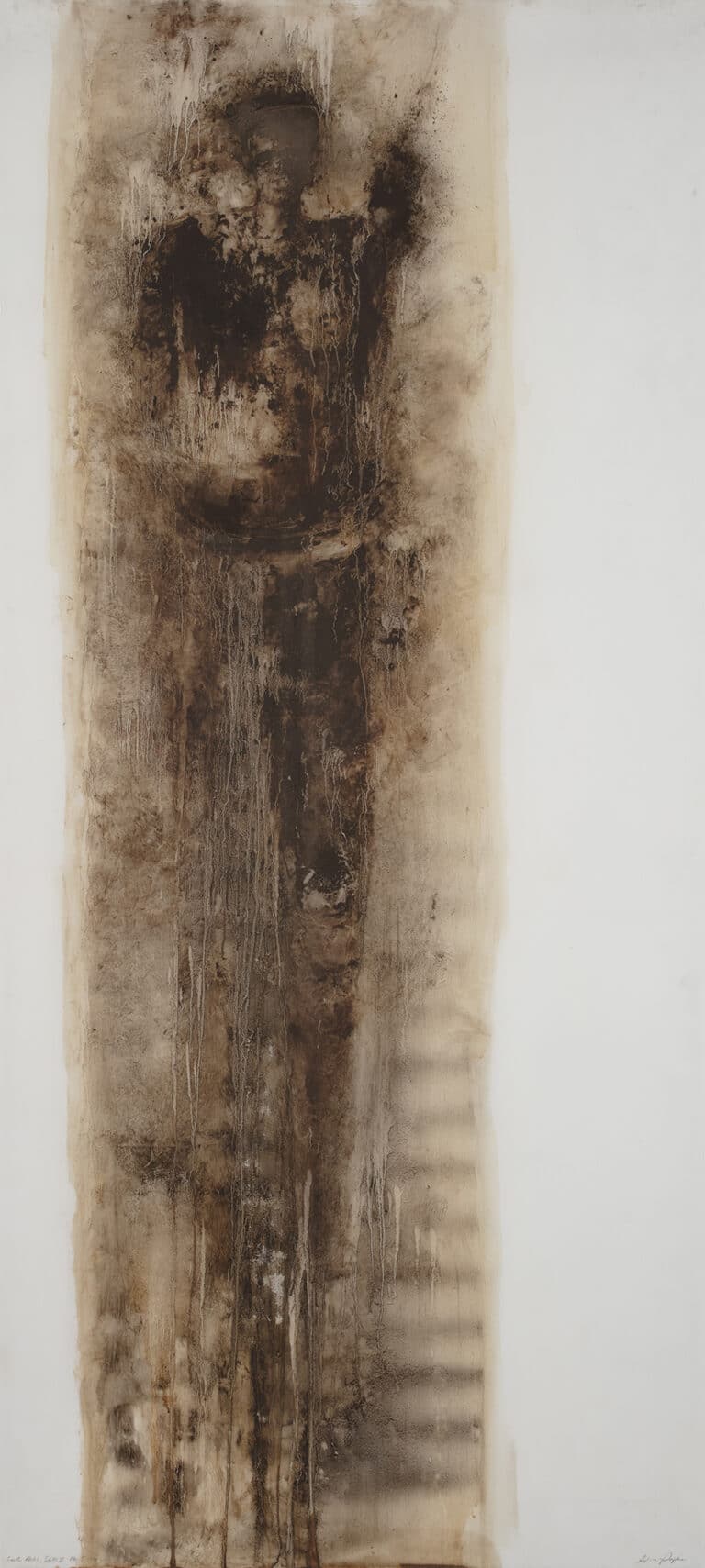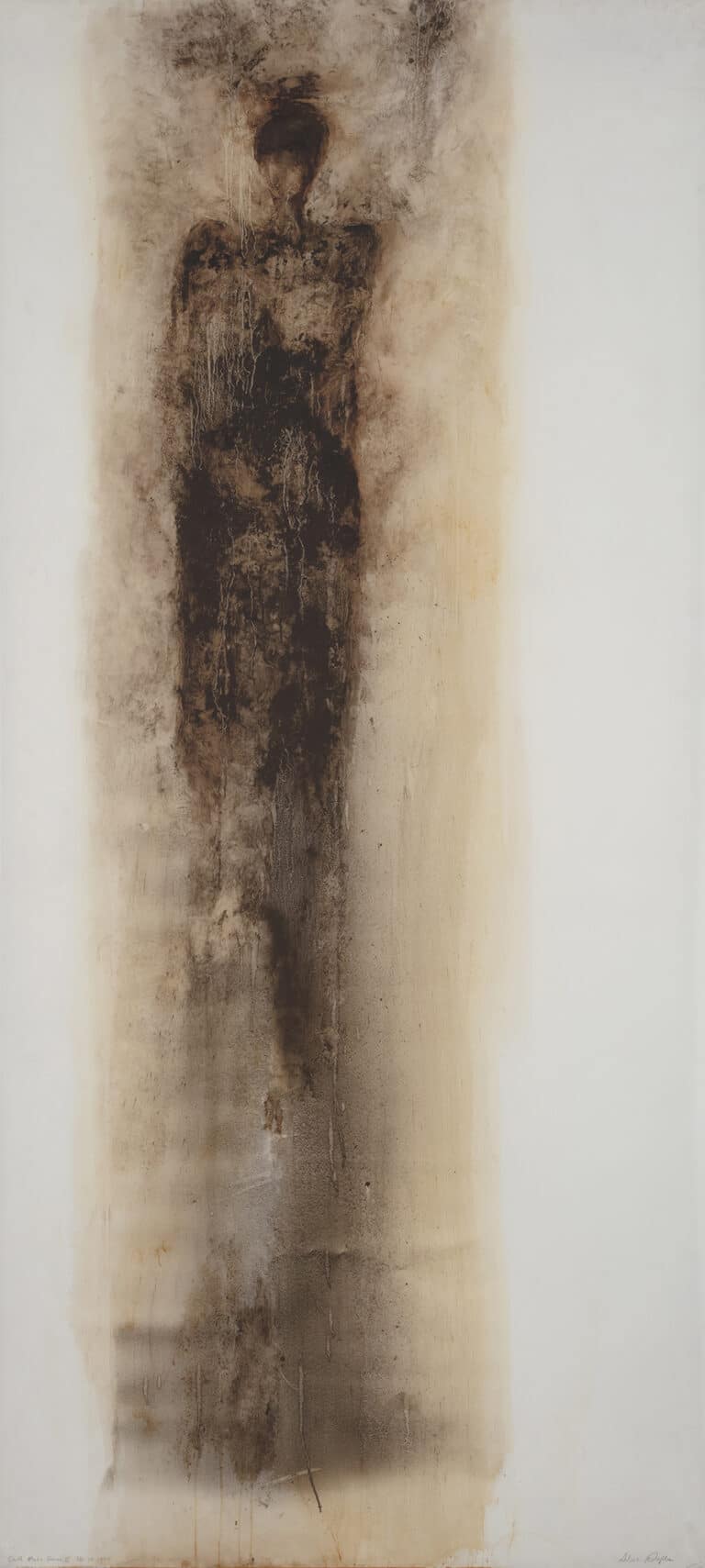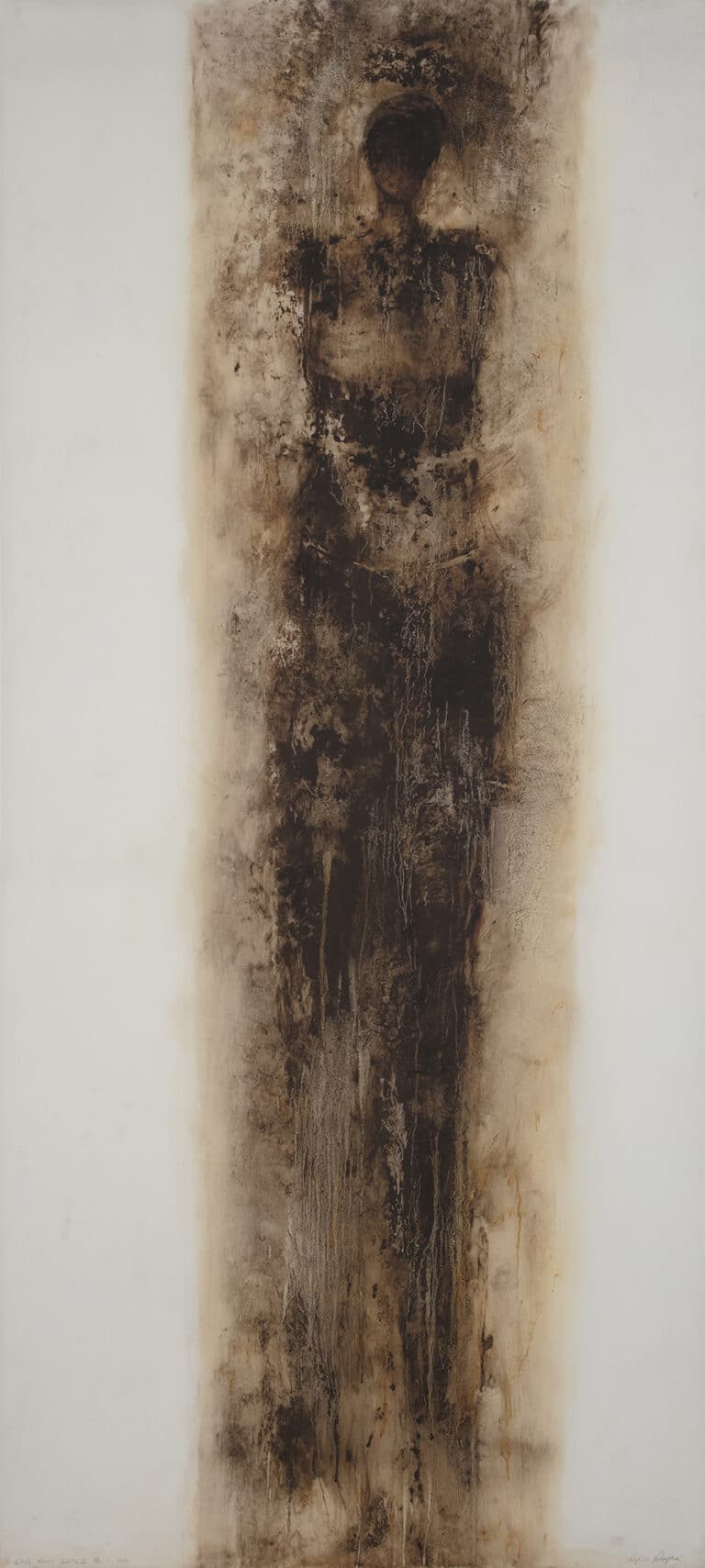Slide Images
1 - Earth Marks Series II No. 1, 1977
Earth, oil on mylar
239 cm x 107 cm
96 in x 42 in
2 - Earth Marks Series II No. 2, 1977
Earth, oil on mylar
239 cm x 107 cm
96 in x 42 in
3 - Earth Marks Series II No. 5, 1977
Earth, oil on mylar
239 cm x 107 cm
96 in x 42 in
4 - Earth Marks Series II No. 10, 1977
Earth, oil on mylar
239 cm x 107 cm
96 in x 42 in
5 - Earth Marks Series II No. 11, 1977
Earth, oil on mylar
239 cm x 107 cm
96 in x 42 in
Earth Marks Series II
The body is the most personal place that I can express from. Our gestures in the present connect us to the past and to the future. They are our lifelines. Each gesture creates a state of mind - a slight movement of the head, shoulder or any part of the body immediately changes our intention. Within seconds, the gestures we make disappear an evaporate. Movement is life; life is movement.
A stain on a wall inspired the Earth Marks series. Each time I looked at the stain, I was taken by how much it resembled a figure. I started playing around with the idea of how much or how little was necessary to convey a figure in painting and drawing. I became intrigued that the slightest smudge would transform and reshape the gesture of the figure.
I have a collection of over 500 earth samples that I have gathered in my travels. It was by accident that I discovered that by using pigment from earth and mixing it with oil, I could make paint. While I became immediately engaged in the rich possibilities of the material, I also felt that the material was a metaphor for transformation. In this extensive ongoing series, I explore the aspect of transformation, as well the gestures and movements of the body. I also started to investigate all kinds of scales; sometimes the figure was alone and at other times in groups. I titled these works Earth Marks, Notes from my Journal. Notations and Heads.
“Earth itself acts as a constitutive medium in Safdie’s series of drawings variously titled Earth Notes, Earth Marks and Notations. These figurations, executed on mylar in earth pigments and oil, engage with the human form both singly and in groups. By their ambiguous scale, their smudged contours and their haunting, nomadic quality, they suggest a meandering, even labyrinthine search for nature in the self.”(1)
“While these works “draw from the human figure"[…] they seem to derive their impetus from within, as if driven by their own will. In this body of work Safdie employs a simple yet vital and expressive technique: as her material she has mixed linseed oil and samples of earth which she has collected from places during her travels. The material is used both in reality and as a metaphor for transformation.” (2)
(1) Zanatovska Murray, Irena,“Sylvia Safdie The Inventory of Invention”, pg. 24 (English), pg. 40 (French), 2004.
(2) Daskalova, Rossitza. “Mindful Movement”, C issue #66, Summer 2000, p.107.
